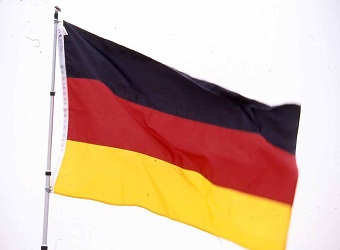Strong household spending, growing state expenditure, and higher company investments consolidated Germany’s role as the euro zone growth engine in the second quarter, although accelerating imports meant growth came in just below expectations.
Seasonally and calendar-adjusted gross domestic product (GDP) rose by 0.6 percent on the quarter, the Federal Statistics Office said on Tuesday. This was slightly weaker than the consensus forecast of 0.7 percent in a Reuters poll.
But the growth rate for the first quarter was revised up to 0.7 percent from 0.6 percent, and the April-June expansion marked a 12th consecutive quarter of growth.
“The German economy is proving its staying power, the upswing continues,” Bankhaus Lampe economist Alexander Krueger said, adding that the European Central Bank’s low interest rates were boosting the economy.
The Statistics Office said that growth in the April-June period was mainly driven by domestic demand as households and state authorities increased their spending and companies boosted investment in buildings and equipment.
But overall growth was dampened by net foreign trade since exports rose less strongly than imports, which the vibrant domestic economy sucked in at a higher rate.
Risks ahead
“Germany’s economic success story goes on and on and on,” ING Bank analyst Carsten Brzeski said, adding there was very little reason to fear a sudden end to the current performance.
He cautioned, however, that the main drivers supporting the domestic economy, such as rising employment, rising wages and increased government spending, could lose some momentum in the coming quarters.
“The same holds for the export sector, where a stronger euro, weaker-than-expected U.S. growth and Brexit uncertainty could take some wind out of the sails without bringing exports to a halt,” Brzeski said.
Unadjusted data had the economy growing by 0.8 percent on the year in the second quarter. This compared with a consensus forecast of 1.9 percent. Adjusted for calendar affects, the yearly growth rate was 2.1 percent in the April-June period.
The Statistics Office will publish its detailed GDP growth data on Aug. 25. The data, coming less than six weeks before a federal election in which Chancellor Angela Merkel seeks to win a fourth term, underlines the continued strength of the German economy compared with its peers.
The French economy, the second-largest in the euro zone, grew 0.5 percent in the second quarter, helped by stronger exports, according to preliminary data.
In Italy, the third-biggest economy in the 19-member bloc, the national central bank expects a quarterly expansion roughly in line with the first quarter’s increase of 0.4 percent. Preliminary data are due on Wednesday.
The Spanish economy keeps powering ahead, however, with a growth rate of 0.9 percent in the April-June quarter.
This was well above the euro zone average of 0.6 percent, according to preliminary estimates released by the European Union’s statistics agency this month.
Outside the euro zone, Britain’s economic output grew by 0.3 percent on the quarter, edging up from 0.2 percent in the first three months.
Source: Reuters
